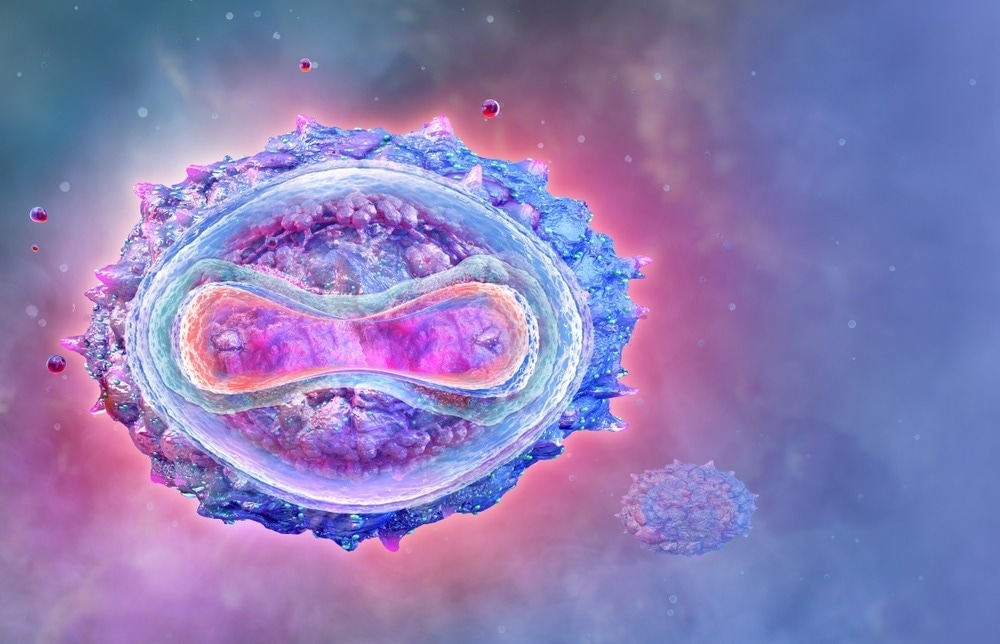In a recent study published in The Lancet Infectious Diseases, researchers characterized the time to mpox (MPX) virus (MPXV) clearance of immunocompetent individuals with mild MPX in a real-world community-based setting utilizing longitudinal information.
 Study: Viral dynamics in patients with monkeypox infection: a prospective cohort study in Spain. Image Credit: Corona Borealis Studio/Shutterstock
Study: Viral dynamics in patients with monkeypox infection: a prospective cohort study in Spain. Image Credit: Corona Borealis Studio/Shutterstock
Background
Studies have reported identifying MPXV deoxyribonucleic acid (DNA) in dermatological lesions, oropharynx, saliva, semen, stool, and urine of individuals who contracted MPX during the ongoing 2022 MPXV clade IIb outbreak. However, MPXV dynamics at the aforementioned sites have not been well-characterized and require further investigation.
About the study
In the present observational, prospective cohort study, researchers explored MPX dynamics in Spain.
The multicentre study comprised 77 adult individuals diagnosed with MPX in outpatient settings of two clinics concerning sexual well-being and two hospitals in Barcelona and Madrid between 28 June 2022 and September 22, 2022. Individuals were included only if they documented the onset of MPX symptoms within the prior 10.0 days of clinical presentation and if the infection did not require hospitalization.
Specimens were self-collected by the participants from five sites in the body, i.e., oropharynx, dermatologic lesions (vesicle fluids or dry scraping from swabs or scars), semen, vagina or rectum, and blood at six different time points. Skin, oropharyngeal, and blood specimens were collected on day 1, day 8, day 15, day 22, day 29, and day 57 post-screening, whereas rectal, semen, and vaginal specimens were collected on day 1, day 15, day 29, and day 57 after initial screening.
The study participants were interviewed for epidemiological, clinical, and demographic characteristics on day zero or baseline. The team obtained data pertaining to the site and number of MPX lesions, systemic MPX symptoms, proctitis, and lymphadenopathy. The individuals were physically examined, and their specimens were analyzed by quantitative polymerase chain reaction (qPCR) analysis and cell culture experiments.
Participants underwent sexually-transmitted illness (STI) screening, including for human immunodeficiency virus (HIV), herpes simplex virus (HSV), Neisseria gonorrhea, Chlamydia trachomatis, and Treponema pallidum. All individuals were provided symptom diary cards for documenting symptoms experienced, including the dates of symptom onset and symptom resolution. Four weeks later, the participants were interviewed telephonically to assess MPXV symptom evolution and lesions.
The prime study endpoint was the duration between the onset of symptoms and the clearance of MPXV DNA from the body. Viral loads from semen and blood were expressed as MPXV DNA copies/mL, whereas those in skin lesion swabs, oropharyngeal swabs, and rectal swabs were expressed as copies/mL of the transport medium. The PubMed database was searched for records on MPXV dynamics published up to 10 October 2022, and only eight records documented quantitative MPXV DNA levels.
Results
A total of 1,663 specimens were obtained from 77 individuals, 97% of whom were male, with a median participant age of 35 years, and 51% (n=39) individuals were HIV-infected. The median values for durations between the onset of MPX symptoms and MPXV DNA clearance were 25.0 days, 16 days, 16 days, 15 days, 13 days, and 1.0 days in dermatological lesions, oropharynx, rectum, semen, and blood, respectively.
The durations between the onset of MPX symptoms and MPXV clearance for ninety percent of MPX cases were 39.0 days and 41.0 days in the semen and dermatological lesions, respectively. At baseline, the median values for MPXV load in dermatological lesions, oropharyngeal specimens, rectal specimens, semen samples, and blood specimens were seven log10 MPXV DNA copies/mL, five log10 MPXV DNA copies/mL, five log10 MPXV DNA copies/mL, four log10 MPXV DNA copies/mL, and four log10 MPXV DNA copies/mL, respectively.
Replication-competent MPXV was isolated in specimens with DNA levels above seven log10 MPXV DNA copies/mL. The findings indicated that dermatological lesion specimens have greater viral loads and that MPXV clears from the lesions after being eliminated from other sites. For MPXV culture, the majority of the MPXV-positive specimens were obtained within 2.0 weeks of diagnosis.
The qPCR analysis could detect MPXV DNA till 6.0 weeks; however, the lack of viable MPXV cultures indicated that the infectious period of MPXV may be shorter. Of note, only three out of 219 semen specimens showed viral loads greater than the threshold for positive MPXV culture, indicating that prolonged MPXV transmission in semen is not likely.
Among the PubMed database studies, a reduction was observed in the proportion of MXV-positive PCR reports after two weeks of MPX diagnosis. A United Kingdom (UK) study on hospitalized MPX patients (n=8) documented prolonged MPXV shedding in the urine, blood, respiratory tract, and lesions. However, the sample population was small, mostly comprised of severe MPX patients, and cell culture experiments were not performed.
A DRC (Democratic Republic of the Congo) study of clade I MPXV reported greater viral loads in dermatological lesions than at other sites and that MPXV DNA could be detected in pharyngeal and blood specimens prior to the rash. Several studies have reported MPXV culture from lesion swabs and urethral, seminal, and anal specimens but had small sample sizes evaluated at only a few time points.
Conclusion
Overall, the study findings showed that among immunocompetent individuals with mild MPX, PCR analysis data independently would indicate a three-week to six-week isolation period, which may be lower based on replication-competent MPXV detection. In addition, the findings showed that semen analysis and long-term condom usage post-MPX recovery may not be required.